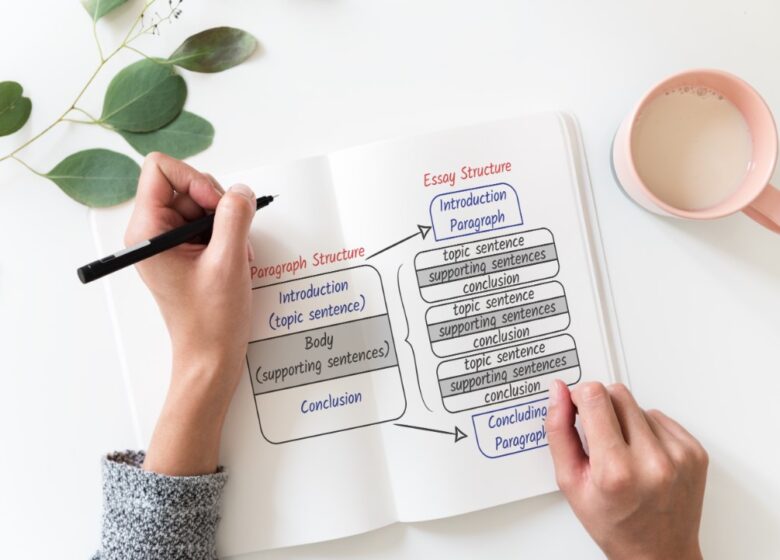
The Unseen Logic of Essay Structure ─ How Paragraphs Build a Coherent Argument
In academic writing, especially at the university level, structure isn’t merely a stylistic requirement-it’s the invisible engine driving your entire argument. Whether you’re crafting an essay for a philosophy module or writing a literature review in psychology, your structure defines how clearly your ideas are conveyed.
For many students seeking assignment help UK or exploring assignment writing services, structure is the most overlooked component. Yet, it plays a critical role in communicating a logical progression of thought, persuading readers, and achieving high marks.
This article will delve deep into the unseen logic of essay structure, showing how paragraphs work together to build coherent arguments. We’ll also offer practical tips for mastering structural flow, making the most of academic assignment help, and using professional writing services wisely.
The Foundation of Structure: Understanding the Essay Blueprint
Introduction, Body, Conclusion: More Than Just Labels
At its core, an academic essay follows a tripartite structure: introduction, body paragraphs, and conclusion. These aren’t arbitrary divisions-they serve distinct rhetorical functions.
- Introduction: Presents the topic, offers background, and states the thesis.
- Body: Breaks down the argument into digestible, logically ordered paragraphs.
- Conclusion: Synthesises the argument and reinforces the thesis.
Students often seek assignment writing help to refine these three sections, especially when it comes to transitions and cohesion.
The Paragraph as a Micro-Argument
Each paragraph in your essay acts like a mini-essay. It should have:
- A clear topic sentence
- Supporting evidence or examples
- Analysis that links back to the main argument
When these elements are present, the paragraph becomes a powerful unit of persuasion.
If you’re considering an assignment helper, focus on how they construct paragraphs. Their skill in building these micro-arguments defines the overall strength of your essay.
How Paragraphs Build a Coherent Argument

Logical Progression: Step-by-Step Argument Building
Think of your essay as a staircase-each paragraph is a step that brings the reader closer to your conclusion. Random steps lead nowhere, but well-placed ones form a smooth ascent.
Here’s how you ensure logical flow:
- Use signposting phrases (e.g. “building on this”, “in contrast”, “therefore”)
- Maintain thematic links between paragraphs
- Avoid redundancy-each paragraph should present a new idea
This is one of the most crucial areas where assignment help services can elevate your work, especially for students unfamiliar with academic conventions in the UK.
Transitions That Bind
Without transitions, your essay becomes a disjointed collection of points. Transitional phrases and sentences act like glue-binding ideas together.
Examples of effective transitions:
- “This illustrates the broader issue of…”
- “Another dimension to consider is…”
- “This leads directly to the next argument regarding…”
Proper transitions are essential for assignments that aim to impress UK academic standards. No surprise, many students look for online assignment help for this very skill.
Crafting Effective Paragraphs – What to Include
The Topic Sentence: A Mini-Thesis
A paragraph without a topic sentence is like a journey without a map. A strong topic sentence:
- Clearly introduces the paragraph’s focus
- Relates directly to the overall thesis
- Helps the reader anticipate what’s coming
This sentence sets the tone and keeps your essay focused.
Evidence and Analysis: The Meat of the Paragraph
Once the topic is stated, the paragraph must support it through:
- Data or quotes
- Examples
- Explanation of how this evidence supports your argument
Avoid stacking evidence without explaining its relevance-this is a mistake flagged frequently in assignment help UK feedback.
Concluding or Linking Sentence: Tying Things Together
Each paragraph should end by:
- Reinforcing how its argument fits the thesis
- Linking forward to the next paragraph
Mastering this structure increases clarity and earns better academic evaluations-something students seeking assignment writing help soon learn.
Common Essay Structure Mistakes (and How to Avoid Them)

The ‘Point Dump’
Throwing multiple ideas into a single paragraph is a common error. It muddles your message and confuses your reader.
Fix: Stick to one key idea per paragraph and support it thoroughly.
Poor Transitions
Jumping from one paragraph to another without clear connections can damage the essay’s logical flow.
Fix: Use linking words and recap how one idea leads into the next.
Lack of Analysis
Some students present evidence but skip over the explanation.
Fix: Always follow up with “why this matters”-explain how evidence supports your argument.
These issues are frequently addressed in professional assignment help services, and correcting them can significantly boost your academic performance.
Techniques to Refine Paragraph Structure
The PEE and PEEL Methods
Many writing experts and assignment help websites recommend using frameworks like:
- PEE: Point, Evidence, Explanation
- PEEL: Point, Evidence, Explanation, Link
These are particularly helpful for essay writing in humanities and social sciences.
Using such methods ensures your paragraphs are well-developed and logically sequenced-traits valued in all UK universities.
Reverse Outlining
After finishing your first draft, try reverse outlining:
- Read each paragraph and write its main point in the margin
- Check if this outline reflects your original thesis
This technique, often used in academic assignment help, exposes weak or off-topic paragraphs.
Paragraph Length Matters
While there’s no strict rule, paragraphs should typically be:
- Between 4–8 sentences
- Focused on a single argument
Too long, and they become confusing. Too short, and they lack development. Balance is key.
The Role of Paragraphs in Different Essay Types

Argumentative Essays
Here, paragraphs are structured to prove a central thesis. Each one contributes a specific point, often with counterarguments included.
Tip: Use clear signposting and rebuttals to show critical thinking-a key marking criterion in UK academics.
Analytical Essays
Paragraphs here explore how and why something works, rather than proving a single point.
Tip: Focus more on interpretation than description. Ensure every paragraph unpacks a new layer of analysis.
Comparative Essays
Each paragraph should address both items being compared, maintaining balanced coverage.
Tip: Use consistent comparison points across paragraphs for better coherence.
Understanding how paragraph logic adapts by essay type is often overlooked by students. Assignment writing services often provide templates or samples to guide this.
Paragraphing in Practice: Examples & Breakdown
Let’s look at a poorly structured paragraph:
“The Industrial Revolution changed society. Many people moved to cities, and new technologies were invented. These had a big impact on work and daily life. Factories were important.”
This lacks a clear topic, coherent argument, and detailed analysis.
Now, a well-structured version:
“The Industrial Revolution transformed societal structures, particularly through urban migration. As factories emerged in major cities, rural populations shifted to urban centres in search of employment. This shift altered family dynamics, housing conditions, and labour patterns, making the city the epicentre of economic life. Thus, the revolution was not merely technological-it was deeply social.”
Notice the topic sentence, evidence, and analysis, all tied into a coherent unit. Such examples are a cornerstone of quality assignment help UK offerings.
When to Seek Professional Help for Paragraph Structure
While self-editing works for some, others benefit from expert guidance. Here’s when students typically consult an assignment helper:
- Struggling with transitions or logical flow
- Unsure how to develop arguments within a paragraph
- Receiving feedback about essay cohesion
- New to UK academic writing standards
Opting for online assignment help doesn’t mean outsourcing the work-it means learning strategies to improve.
Using Assignment Help Services Effectively

Don’t Just Copy – Learn From Feedback
Services offering assignment writing help often include annotations, comments, or outlines. These are valuable tools for learning:
- Identify how experts structure paragraphs
- Pay attention to how arguments evolve
- Apply the techniques in your future assignments
Check the Credentials of the Assignment Help Website
A reliable assignment help website should offer:
- Academic-level samples
- Transparent pricing
- UK-specific support for formatting and referencing
Use such services as educational support systems-not shortcuts.
Conclusion
Mastering essay structure is one of the most effective ways to elevate your academic writing. By understanding the purpose of each paragraph, linking them logically, and ensuring each supports the thesis, you transform your essay from a collection of ideas into a coherent, persuasive argument.
For those looking to refine this skill, seeking support from a reputable service can be beneficial. Assignment in Need (assignnmentinneed.com) is one such option offering educational support in structuring and editing, tailored for UK academic standards.
Whether you’re seeking feedback, models to study, or deeper insight into the mechanics of good writing, remember-every well-built essay begins with well-built paragraphs.




